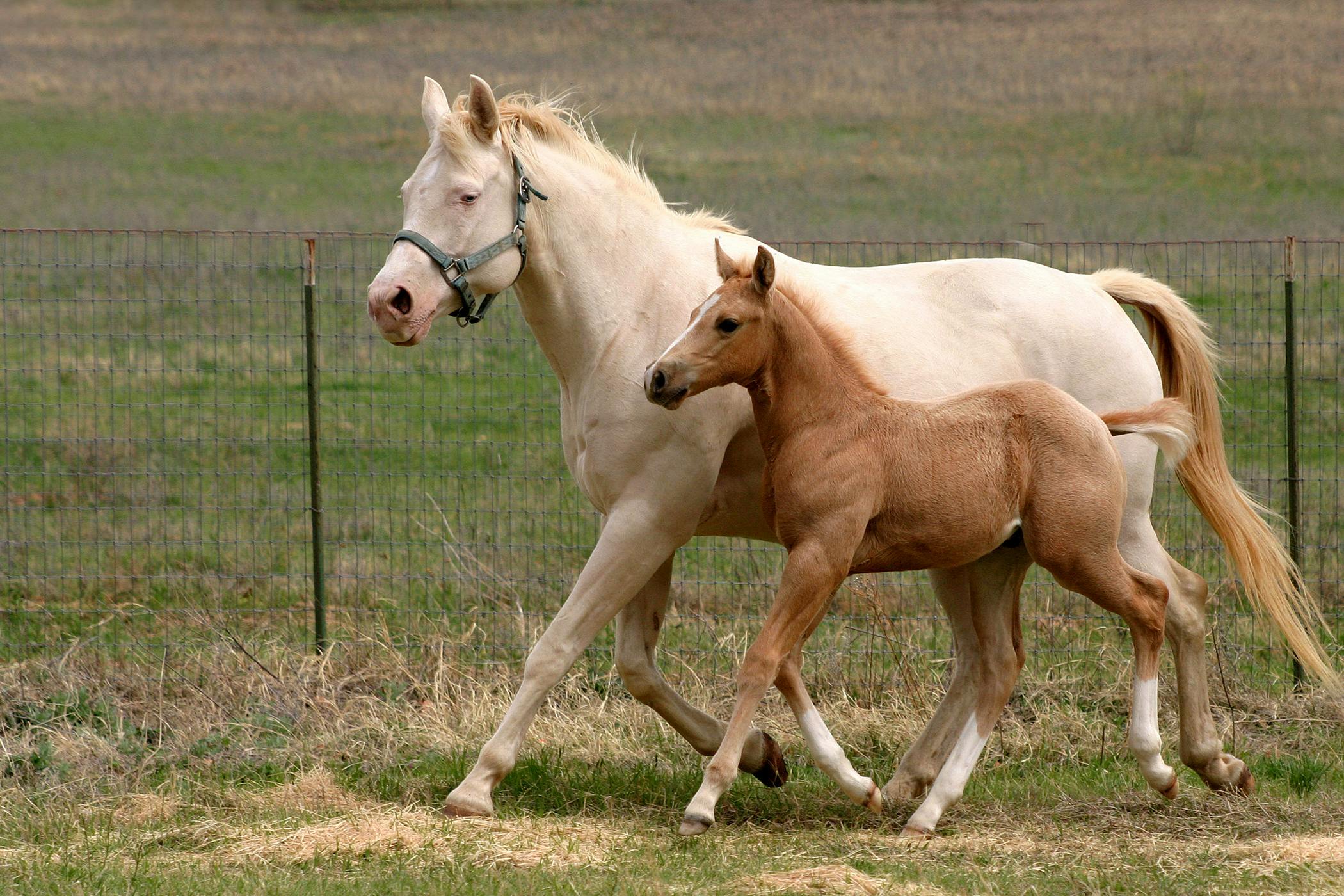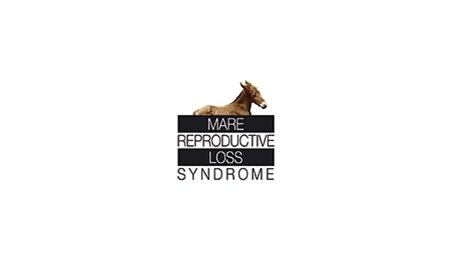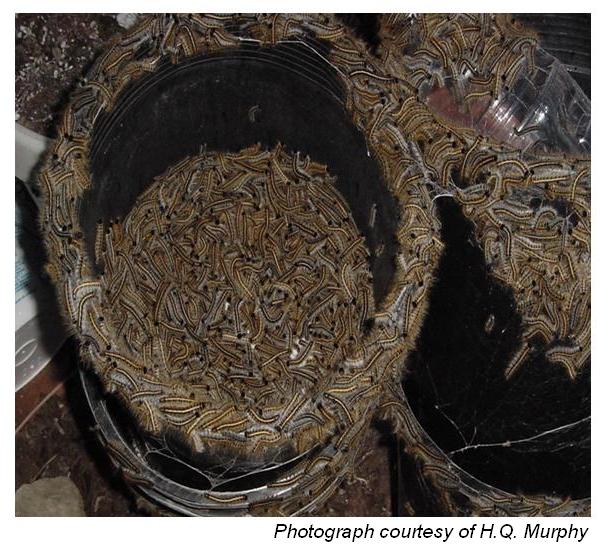Mare Reproductive Loss Syndrome
Mare reproductive loss syndrome. MRLS is caused by contact with the hairs of the eastern tent caterpillar ETC Malacosoma americanum in mares. An epidemic of early fetal loss EFL late fetal loss LFL fibrinous pericarditis and unilateral uveitis which occurred during the spring of 2001 are together now known as the mare reproductive loss syndrome MRLS. The abortigenic disease now known as mare reproductive loss syndrome MRLS struck hard and without warning.
Some individual farms had 60 of their broodmares abort their foals. The disease was caused by something in the environment was not transmitted between animals and was not associated with any known abortigenic agent or disease. An epidemic of early fetal loss EFL late fetal loss LFL fibrinous pericarditis and unilateral uveitis which occurred during the spring of 2001 are together now known as the mare reproductive loss syndrome MRLS.
Chapter 85 - Mare reproductive loss syndrome Introduction. With no immediate explanation for the cause it was identified as Mare Reproductive Loss Syndrome MRLS. Mare reproductive loss syndrome MRLS can be described as an epidemic of early fetal loss and late fetal.
Mare reproductive loss syndrome MRLS is a condition that causes outbreaks of abortions stillbirths and weak early-death foals in pregnant mares. A similar epidemic with less intensity was reported during the same period of time from southern Ohio West. 2314 mares confirmed pregnant at approximately 28 days after breeding from 36 farms in central Kentucky including 515 mares that had early-term abortions.
To characterize the temporality of dates of breeding and abortion classified as mare reproductive loss syndrome MRLS among mares with abortions during early gestation. Stress fever uterine infections hormone abnormalities and twins can all cause a mare to spontaneously abort. Pillar early fetal loss late fetal loss uveitis septic penetrating setal hypothesis ABSTRACT Reviewing the mare reproductive loss syn-drome MRLS it is proposed that the funda-mental mechanism of this syndrome which includes early fetal loss late fetal loss uveitis pericarditis and encephalitis is.
Together these conditions became known as mare reproductive loss syndrome MRLS. An epidemic of early fetal loss EFL late fetal loss LFL fibrinous pericarditis and unilateral uveitis which occurred during the spring of 2001 are together now known as the mare reproductive loss syndrome MRLS. Exposure to the eastern tent caterpillar ETC the larval form of Malacosoma americanum during April.
An abortion storm with similar clinical signs and risk factors has also been reported from Australia. Kentuckys the first clinical signs of what would become Thoroughbred population was heaviest hit due to the known as mare reproductive loss syndrome breeding and foaling schedule of the breed and because MRLS in late April and early May of 2001.
Mare reproductive loss syndrome MRLS can be described as an epidemic of early fetal loss and late fetal.
An epidemic of early fetal loss EFL late fetal loss LFL fibrinous pericarditis and unilateral uveitis which occurred during the spring of 2001 are together now known as the mare reproductive loss syndrome MRLS. An epidemic of early fetal loss EFL late fetal loss LFL fibrinous pericarditis and unilateral uveitis which occurred during the spring of 2001 are together now known as the mare reproductive loss syndrome MRLS. Early fetal loss was observed in the first trimester and LFL was observed in the last trimester of. The pregnant mare ingests tent caterpillar while foraging The mare drinks from a water bucket that has tent caterpillars Old skin of the tent caterpillar is ingested by the mare while grazing. MRLS has since been diagnosed in other states including New York and Florida. Consumption of large numbers of caterpillars by pregnant mares caused staggering foal losses in the Mare Reproductive Loss Syndrome MRLS outbreak of 1999-2001. During April and May of 2001 and 2002 the pregnant mare population of central Kentucky in the USA comprising multiple breeds of horses experienced a high level of fetal loss. Analysis of records showed that MRLS had occurred in the area in earlier years. Causes of abortion in mares include viral diseases ingestion of poisonous plants mycotoxins bacterial infections stress of either the mare or the fetus gene mutations mare reproductive loss syndrome MRLS and lack of sufficient nutrients to support the fetus especially in the case of twins.
Horse embryos are not more fragile than other species. Pillar early fetal loss late fetal loss uveitis septic penetrating setal hypothesis ABSTRACT Reviewing the mare reproductive loss syn-drome MRLS it is proposed that the funda-mental mechanism of this syndrome which includes early fetal loss late fetal loss uveitis pericarditis and encephalitis is. Horse embryos are not more fragile than other species. Kentuckys the first clinical signs of what would become Thoroughbred population was heaviest hit due to the known as mare reproductive loss syndrome breeding and foaling schedule of the breed and because MRLS in late April and early May of 2001. An epidemic of early fetal loss EFL late fetal loss LFL fibrinous pericarditis and unilateral uveitis which occurred during the spring of 2001 are together now known as the mare reproductive loss syndrome MRLS. Its primarily that horses in general have poor reproductive performance ability to maintain a conceptus. During April and May of 2001 and 2002 the pregnant mare population of central Kentucky in the USA comprising multiple breeds of horses experienced a high level of fetal loss.




































Post a Comment for "Mare Reproductive Loss Syndrome"